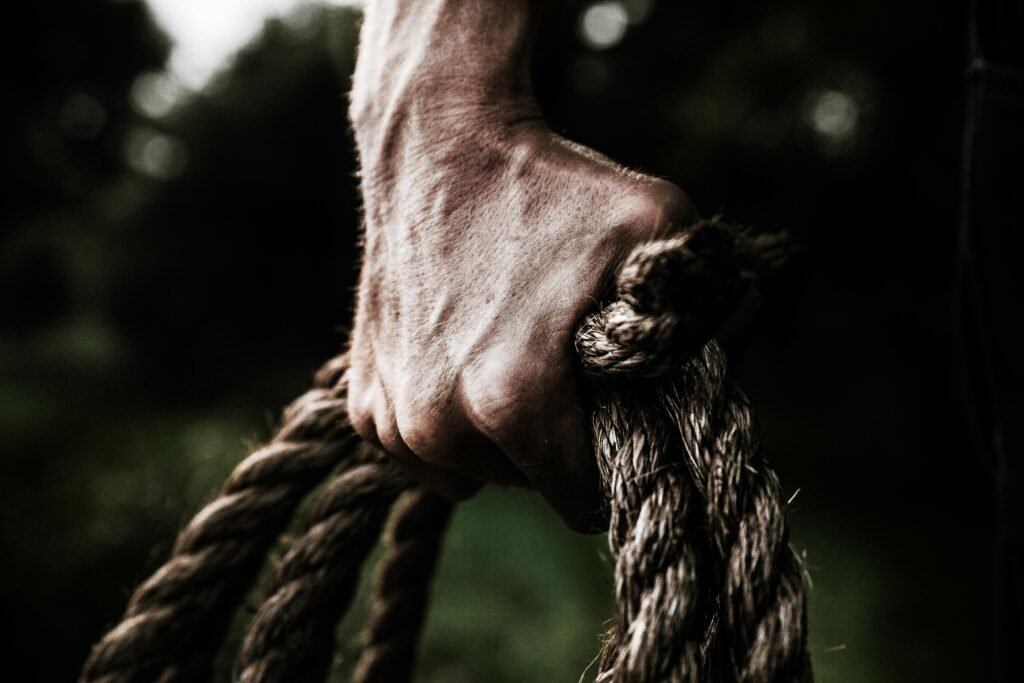Discover why tracking your blood pressure at home from age 30 could be the most important health habit you’ll ever develop—and how to do it right.
The Silent Crisis Affecting Modern Men
As a fitness coach with decades of experience, I’ve witnessed a troubling trend: men in their 30s and 40s discovering they have dangerously high blood pressure only after a heart attack, stroke, or routine physical that sounds an alarm bell. What’s particularly shocking is that nearly 50% of men with high blood pressure don’t even know they have it.
This isn’t about older men either. Recent data shows that 1 in 4 men between ages 30-39 already have elevated blood pressure, often without any symptoms. The problem isn’t just the condition itself—it’s the missed opportunity for early intervention that could prevent decades of health complications.
High blood pressure, often called the “silent killer,” rarely announces itself with obvious symptoms. Unlike a broken bone or obvious injury, hypertension works quietly in the background, damaging arteries, straining the heart, and setting the stage for serious cardiovascular events down the road.

Why Age 30 is the Critical Starting Point
Thirty isn’t arbitrary—it’s when multiple risk factors begin converging for men. Understanding these changes helps explain why proactive monitoring becomes crucial:
Metabolic Shifts
Around age 30, men experience several metabolic changes that directly impact cardiovascular health:
- Decreased testosterone production: About 1% per year after age 30, affecting muscle mass and metabolism
- Slower metabolism: Muscle mass naturally decreases 3-8% per decade
- Insulin sensitivity decline: Bodies become less efficient at processing glucose
- Increased abdominal fat: Particularly dangerous visceral fat around organs
Lifestyle Factors
The thirties typically bring lifestyle changes that compound cardiovascular risk:
- Career stress: Peak earning years often mean peak stress levels
- Sedentary jobs: Many men transition to desk-based careers
- Family responsibilities: Less time for exercise and self-care
- Social drinking: Regular alcohol consumption becomes more common
- Sleep disruption: Work and family demands often sacrifice sleep quality
Arterial Changes
By age 30, arteries begin showing early signs of stiffening and plaque formation. These changes are often reversible with early intervention but become increasingly difficult to address as years pass.
Understanding Blood Pressure Numbers
Blood pressure is recorded as two numbers: systolic (top) over diastolic (bottom), measured in millimeters of mercury (mmHg). Here’s what the numbers actually mean:
| Category | Systolic (mmHg) | Diastolic (mmHg) | Action Needed |
|---|---|---|---|
| Normal | Less than 120 | Less than 80 | Maintain healthy habits |
| Elevated | 120-129 | Less than 80 | Lifestyle modifications |
| Stage 1 | 130-139 | 80-89 | Doctor consultation + lifestyle changes |
| Stage 2 | 140/90 or higher | 90 or higher | Immediate medical attention |
Critical insight: Many men think 140/90 is “borderline” high blood pressure. In reality, this reading puts you in Stage 2 hypertension, significantly increasing your risk of heart attack and stroke.
The Hidden Costs of Ignoring Blood Pressure
High blood pressure isn’t just a number on a monitor—it’s actively damaging your body every day. Here’s what happens when blood pressure remains elevated:
Cardiovascular Damage
- Arterial scarring: High pressure creates micro-tears in artery walls
- Plaque formation: Cholesterol deposits in damaged areas
- Heart enlargement: The heart muscle thickens from overwork
- Reduced blood flow: Narrowed arteries limit oxygen delivery
Performance and Quality of Life
- Reduced exercise capacity: Less oxygen to working muscles
- Erectile dysfunction: Poor blood flow affects sexual performance
- Cognitive decline: Reduced blood flow to the brain
- Kidney damage: Filtering capacity decreases over time
- Vision problems: Retinal blood vessel damage
Real Cost Example: A 35-year-old man with untreated high blood pressure has a 40% higher risk of heart attack by age 50 compared to someone with normal blood pressure.
How to Monitor Blood Pressure at Home
Home monitoring provides more accurate readings than occasional doctor visits because it eliminates “white coat syndrome” and captures your true daily patterns.
Choosing the Right Monitor
Not all blood pressure monitors are created equal. Here’s what to look for:
- Automatic vs. Manual: Automatic cuffs are more accurate for self-monitoring
- Cuff size: Proper fit is crucial—too small gives falsely high readings
- Validation: Look for monitors validated by the British Hypertension Society
- Memory function: Stores multiple readings for tracking trends
- Smartphone connectivity: Helpful for long-term data analysis
Our recommended professional-grade home blood pressure monitor (US Readers)
Our recommended professional-grade home blood pressure monitor (GB Readers)
Our recommended professional-grade home blood pressure monitor (EU Readers)
Proper Measurement Technique
- Timing: Same time daily, avoid caffeine/exercise 30 minutes before
- Position: Sitting upright, feet flat on floor, arm at heart level
- Preparation: 5 minutes of quiet rest before measuring
- Multiple readings: Take 2-3 readings, 1 minute apart, use the average
- Consistency: Use the same arm every time
- Record keeping: Log date, time, reading, and any notable factors
Creating Your Monitoring Schedule
Effective blood pressure monitoring requires consistency without becoming obsessive. Here’s a practical approach:
Beginner Protocol (First Month)
- Frequency: Twice daily (morning and evening)
- Morning: Within 1 hour of waking, before coffee
- Evening: Before dinner, at least 30 minutes after physical activity
- Goal: Establish your baseline patterns
Maintenance Protocol (Ongoing)
- Normal readings: 3-4 times per week
- Elevated readings: Daily until normalized
- Pre-doctor visits: Two weeks of daily readings
- Medication changes: Daily for first month, then as directed
Pro Tip: Track readings in a smartphone app or logbook. Patterns over time are more valuable than individual readings.
Natural Ways to Lower Blood Pressure
Before medication becomes necessary, several lifestyle interventions can significantly reduce blood pressure. Many of my clients have avoided medication entirely through these evidence-based approaches:
Exercise Prescriptions
- Aerobic exercise: 150 minutes moderate intensity weekly (can reduce BP by 5-7 mmHg)
- Resistance training: 2-3 sessions weekly (3-5 mmHg reduction)
- HIIT workouts: 3x weekly, 20-minute sessions (highly effective for busy men)
- Daily walks: Even 30 minutes provides measurable benefits
Dietary Interventions
- DASH diet principles: High potassium, low sodium approach
- Sodium reduction: Aim for less than 2,300mg daily (1,500mg ideal)
- Potassium increase: 3,500-4,700mg daily from whole foods
- Magnesium optimization: 400-420mg daily supports vascular health
- Limit alcohol: No more than 2 drinks daily, preferably less
Stress Management
- Meditation: Even 10 minutes daily can reduce readings
- Deep breathing: 4-7-8 breathing technique before measurements
- Regular sleep: 7-9 hours nightly supports hormonal balance
- Work-life boundaries: Chronic stress elevates cortisol and blood pressure
The Fitness Connection: Exercise as Medicine
Exercise isn’t just good for blood pressure—it’s one of the most powerful interventions available. Here’s how different types of exercise specifically benefit cardiovascular health:
| Exercise Type | BP Reduction | Best Frequency | Key Benefits |
|---|---|---|---|
| Aerobic Training | 5-7 mmHg | 5x weekly | Improves arterial flexibility |
| Resistance Training | 3-5 mmHg | 3x weekly | Increases muscle mass, boosts metabolism |
| HIIT | 4-6 mmHg | 3x weekly | Time-efficient, improves heart efficiency |
| Yoga/Stretching | 2-3 mmHg | Daily | Reduces stress, improves flexibility |
The key insight: consistency beats intensity. A moderate 30-minute walk daily is more beneficial than occasional intense workouts.
Common Monitoring Mistakes to Avoid
After helping hundreds of men establish effective monitoring routines, I’ve identified the most common errors that lead to inaccurate readings or abandoned habits:
- Wrong cuff size: Using a standard cuff when you need large or extra-large
- Poor positioning: Arm below heart level gives falsely high readings
- Taking single readings: Blood pressure naturally fluctuates—averages are more reliable
- Measuring after stress: Wait at least 30 minutes after exercise, caffeine, or stressful events
- Talking during measurement: Can increase readings by 5-10 mmHg
- Inconsistent timing: Blood pressure varies throughout the day
- Not calibrating equipment: Monitors should be checked annually for accuracy
- Obsessive monitoring: Multiple daily readings can create anxiety that raises pressure
Success Strategy: Focus on trends over individual readings. One high reading doesn’t mean you have hypertension—patterns over weeks matter more.
When to Involve Your Doctor
Home monitoring is powerful, but it’s not a replacement for professional medical care. Here’s when to seek medical attention:
Immediate Medical Attention
- Readings consistently above 180/120 mmHg
- Sudden severe headaches with high readings
- Chest pain or shortness of breath
- Vision changes or neurological symptoms
- Severe nosebleeds with elevated pressure
Schedule Appointment
- Average readings consistently above 130/80 mmHg
- Significant changes in previously normal readings
- Family history of cardiovascular disease
- Other risk factors (diabetes, obesity, smoking)
- Questions about medication or treatment options
Bring your monitoring log to appointments. Doctors make better treatment decisions with comprehensive data rather than single office readings.
Technology and Apps for Blood Pressure Tracking
Modern technology makes monitoring easier and more insightful than ever:
Smartphone Integration
- Bluetooth monitors: Automatically sync readings to your phone
- Health apps: Apple Health, Google Fit integration
- Trend analysis: Visualize patterns over weeks and months
- Reminder systems: Never forget monitoring sessions
- Doctor sharing: Email reports directly to healthcare providers
Advanced Features to Consider
- Multiple user memory: Track family members on one device
- Irregular heartbeat detection: Identifies potential arrhythmias
- Large displays: Easier reading in low light
- Voice guidance: Helpful for proper technique
Our recommended smart blood pressure monitor with app integration (US Readers)
Our recommended smart blood pressure monitor with app integration (GB Readers)
Our recommended smart blood pressure monitor with app integration (EU Readers)
The 30-Day Blood Pressure Challenge
Ready to take control? Here’s a practical 30-day protocol to establish healthy monitoring habits and potentially improve your numbers:
Week 1: Establish Baseline
- Take readings twice daily at consistent times
- Record all factors: stress level, sleep quality, caffeine intake
- Don’t make any lifestyle changes yet—just gather data
Week 2-3: Implement Changes
- Add 30 minutes daily walking
- Reduce sodium intake by 50%
- Implement 10 minutes daily stress management
- Continue twice-daily monitoring
Week 4: Optimization
- Add resistance training 2x weekly
- Fine-tune nutrition based on what’s working
- Adjust monitoring frequency based on results
- Plan long-term strategy
Beyond the Numbers: Building a Heart-Healthy Lifestyle
Blood pressure monitoring is just the beginning. Use the data to build sustainable habits that support cardiovascular health for decades:
- View it as performance data: Like tracking lifts in the gym, BP readings show how your cardiovascular system is adapting
- Connect to bigger goals: Lower blood pressure means better workout performance and recovery
- Share with family: Model healthy behaviors for children and spouse
- Celebrate improvements: A 5-point drop represents real health gains
- Stay educated: Understanding your body motivates better choices
Remember: every point you lower your blood pressure reduces cardiovascular risk. A reduction from 140/90 to 130/80 might seem small, but it represents a 22% reduction in heart attack risk and 41% reduction in stroke risk.
Taking Action: Your Next Steps
Starting blood pressure monitoring at 30 isn’t about becoming a hypochondriac—it’s about taking control of your health destiny. In my four decades of coaching, I’ve seen too many strong, capable men sidelined by preventable cardiovascular events.
The men who thrive in their 40s, 50s, and beyond aren’t necessarily the ones with the best genetics. They’re the ones who started paying attention to the right metrics at the right time.
Your action plan:
- This week: Purchase a quality home blood pressure monitor
- Next 7 days: Establish baseline readings twice daily
- Week 2: Implement one lifestyle change (exercise, nutrition, or stress management)
- Month 1: Complete the 30-day challenge protocol
- Ongoing: Maintain monitoring schedule based on your results
Blood pressure monitoring at 30 isn’t just about preventing disease—it’s about optimizing performance, maintaining vitality, and ensuring you’re operating at your peak for decades to come.
Remember: The best time to start monitoring was 20 years ago. The second best time is today.



